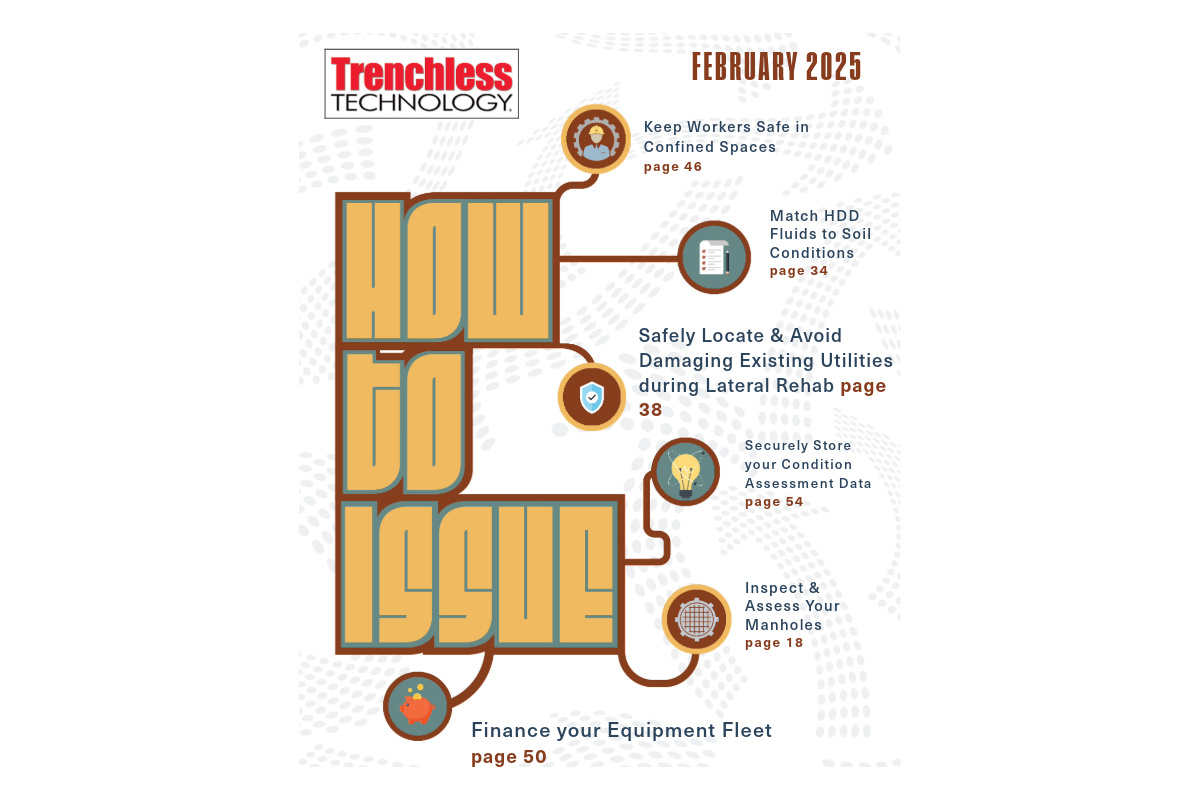Working in Winter
Every year in New England you will hear somewhere — usually a coffee shop early in the morning — that “Got a little frost on the pumpkin last night, huh Bub?” This is a sure sign that winter is coming to New England and with it cold weather.
Being involved in trenchless construction and rehabilitation in colder climates can be a challenge but one that with a little planning and preparation can be overcome without damage to costly equipment, injury to employees or lost time on the project.
Keeping your equipment operating properly and protected from the cold is an essential step in being able to do business in colder months. A trenchless project may have a variety of equipment, both large and small, and each one will have specific aspects that must be taken care of. Whether it be a large HDD unit, a portable vac trailer, a portable pump, or a mud mixing unit without any single piece in operation an entire project’s worth of profit can be lost.
The best way to prepare for an upcoming winter is exactly that, prepare. All members of a project team or work group are responsible for the success of the project and therefore must be trained and prepared for dealing with cold and snow. From the project superintendent, to the equipment operator and Mechanic — everyone needs to be able to recognize the triggers and when to implement a cold weather plan. This is typically at or near the freezing point; however, it is important to keep in mind other factors like wind chill or precipitation in the form of rain, snow, sleet or freezing rain that will also effect your equipment operation, jobsite safety and productivity.
First, refer to the owners’ and operators’ manual for each individual piece of equipment — inside of it should be clearly written procedures for winterization of the equipment. Additionally, the manufacturer may recommend lube and oil with different viscosities for colder weather. The operators of the equipment should review these procedures in the summer or fall so they are not learning them for the first time when it is most critical that they do it right. Oftentimes a system will need support equipment in order to properly protect it like an air compressor to “blow out” the system or non-toxic antifreeze to protect the pumping system. It cannot be understated the power of freezing water and the amount of damage even a cup of water can cause to mechanical equipment. A frozen and split pump end or gearbox in an HDD unit can cost tens of thousands of dollars when it could have been “pickled” using non-toxic antifreeze for only a few dollars.
Secondly, the employees who will be exposed to the elements must be properly prepared and trained in how to protect themselves and recognize the signs of injury often caused by cold weather. Many days in late fall and early winter in New England, the weather can be 20 F in the morning and 60 F by lunch. Employees need to be prepared with layered clothing and the proper PPE to keep them safe and comfortable. Additionally, on cold mornings stretching and preparations for work will take a little bit longer so be sure the plan additional time each morning to get crews bodies acclimated with the outdoors. Plan times for employees to take breaks and get warmed up, even if it is just for a few minutes in a crew truck.
Tips for Success:
1. Plan for the upcoming winter in advance with all employees affected and with all equipment that may be needed and exposed to the elements.
2. Keep fuel tanks full at the end of each day, this will reduce condensation and water contamination in the tank, which is one of the biggest causes of downtime in the winter. The use of a winter fuel blend is in many cases best practice.
3. Prepare equipment operations and maintenance manuals and be sure they have clearly defined “winterization” procedures and that you have all the support equipment necessary to perform them. If they do not include winterization procedures, you can develop them and provide them to operators in a written SOP (Standard Operating Procedure).
4. Make modifications to equipment or processes that can protect it from the elements, however, make sure these modifications are approved by the manufacturer. Adding an enclosure over a mud mixing system or a recirculation system on a pump may seem like basic modifications, but, if damaged, the equipment warranties, oftentimes, may be voided.
5. Prepare a cold weather “toolbox safety talk” and have each of your supervisors discuss this at each shift and as conditions change on a jobsite.
6. Make sure that the proper PPE has been approved by your safety designee and is available for employees when they need it.
Working in areas of the country with colder climates during the winter months is not without challenges, but with proper planning and execution you can be successful and safe.
This article was provided by the Northeast Trenchless Association, which represents horizontal directional drilling, pipe bursting, pipe ramming, jack and bore and other trenchless industry contractors and manufacturers/suppliers.


